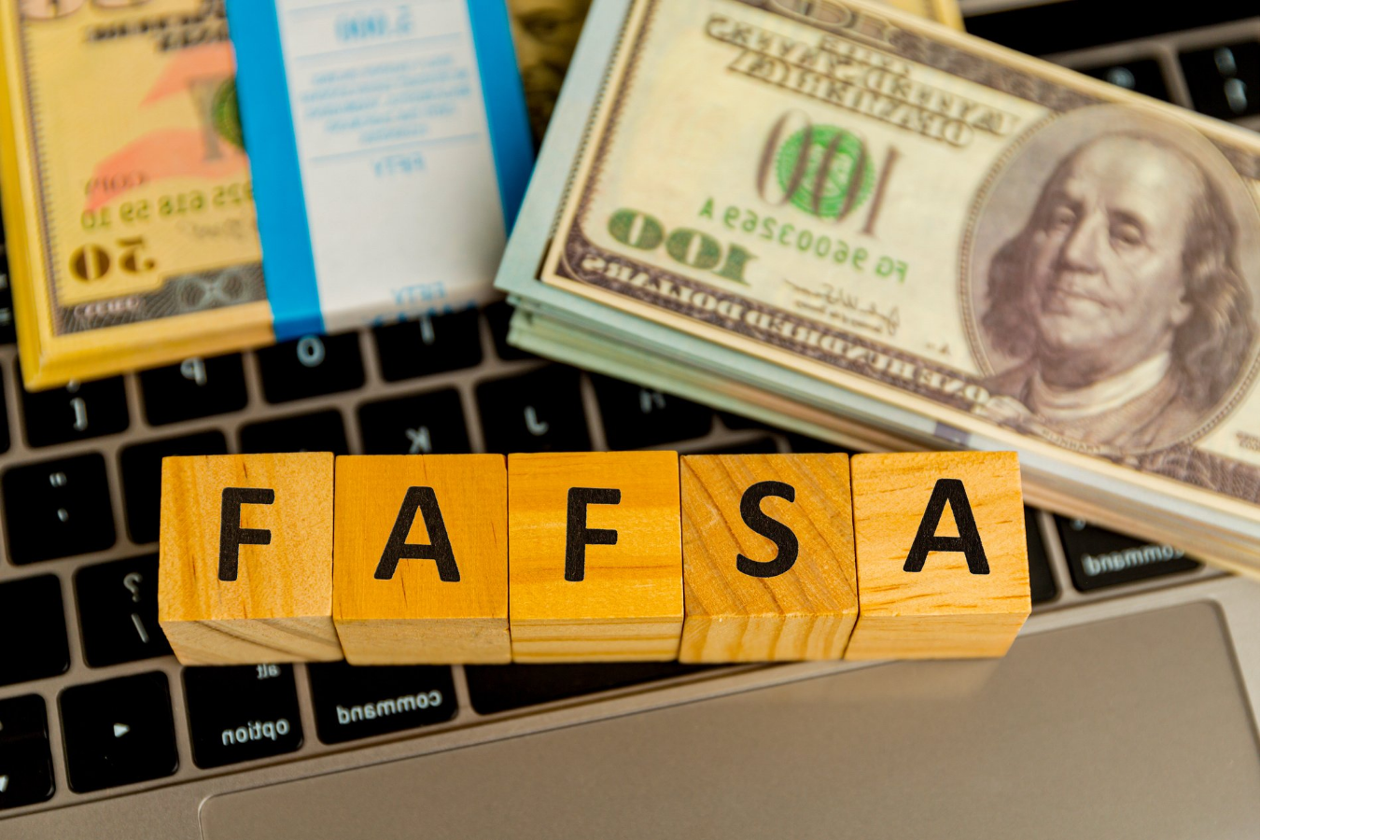
Everything You Need to Know When Applying for Financial Aid
Dec 01, 2021FINANCIAL AID 101
Financial aid is money to help pay for college!

The FAFSA
 FAFSA—this is the starting point for all financial aid. It is the Free Application for Federal Student Aid. This is a government online form that is FREE to fill out.
FAFSA—this is the starting point for all financial aid. It is the Free Application for Federal Student Aid. This is a government online form that is FREE to fill out.
- You can fill out your FAFSA at https://studentaid.gov or http://fafsa.gov. Do NOT go to FAFSA.com—this is a site that charges you to submit your FAFSA under the guise that they are reviewing it!
- The results of the FAFSA determine your Federal Financial Aid.
- Federal Aid is just one portion of Financial Aid.
- Colleges also have school funded aid. Some of it is based on your need, determined by the FAFSA. Other aid can be merit or association based, or any combination of requirements the school sets.
Who is Eligible?
- You must have a high school diploma or GED;
- Be a US citizen or eligible noncitizen
- Have a valid social security number
- Be registered with Selective Service — All men over 18 Must be registered! You can register at www.sss.gov
- Be enrolled as a regular student in an eligible program
- Be enrolled at least 1/2 time to be eligible for Direct Loan program funds
- Sign statements stating that you are not in default on a federal student loan and
will use federal student aid only for educational purposes - Maintain satisfactory academic progress in college to continue to receive aid
What do you need to complete the FAFSA?
- The students social security number and parents social security number for a dependent student. Students are typically considered dependent if they are under 24 years old, not married, without children and have not been emancipated.
- Students driver's license number (if you have one)
- Federal Tax information; tax returns, w-2's, records of untaxed income such as child support for student and parents for a dependent student
Starting the FAFSA
Once you have gathered the above information, you can begin by going to the FAFSA website https://studentaid.gov
- You will need to enter your name and social security number exactly as it appears on your social security card.
- You will create a password. This is your PIN. Write it down. You will need it to review or make any changes or to complete it again for the following year.
- You will need your schools FAFSA code. You can include up to 10 schools. The codes can be found on the schools websites or on the FAFSA website.
- You will supply financial information for the parent (s) you have lived with more during the past 12 months. If this parent is remarried, you must include the income of your stepparent as well. The exceptions to using step parent info is the question regarding parents' education level—only use birth or adoptive parents.
- If you are considered a dependent, you must use your parents' information, even if you do not live with them.
- You will sign your FAFSA with your PIN so it can be processed. You will receive an email confirmation. You will receive a Student A id Report (SAR) within 3 weeks. This will not indicate how much you will receive, it is merely a summary of the information that you provided. The schools you listed will later send you an Award Letter telling you what you are eligible for at their school— and that timeline differs between every school.
What is Financial Aid?
Financial Aid is comprised of several pieces. They each have different requirements.
Federal student aid includes;
- Grants— Grants are free government money that you do not need to pay back.
- Loans— Federal student loans are low interest rate loans that you start paying back 6 months after you leave school. They are not credit based and do not require a cosigner. There are a few types of federal student loans.
- Direct Subsidized Student Loans are loans to students who demonstrate financial need. The US Department of Education pays the interest while you are still in school at least 1/2 time.
- Direct Unsubsidized Student Loans are to students but no need is required. Interest accrues from the start of the loan.
- Parent Plus Loans are loans made to parents of dependent students to help pay for education expenses that are not covered by other financial aid. These are credit based and as many as 50% of all parents are denied the loan. In that case the student is eligible for additional loan amounts.
Work Study programs are need based. The student typically will work on campus or off campus in a private non-profit or public agency. Work is part time and is pay is on an hourly basis. Students' academic schedule and academic progress is considered in scheduling hours.
Other Financial Aid
Scholarships— Money that does not need to be paid back. It is often merit based, on academics or athletic accomplishments. Athletic scholarships are only offered by NCAA Division I and II schools as well as NAIA schools. NCAA Division III schools do not offer athletic scholarships. Occasionally, a school will use a formula of need and accomplishments to determine merit award eligibility. GPA and SAT/ACT scores are most often used in the calculation of the award amount.
High schools typically have a pool of money that they award in smaller scholarship amounts at the end of the year. Student's need to fill out a community scholarship application to be eligible. Community groups donate to these funds, and may help with the selection process. These scholarships are based on a student's involvement or leadership within the groups.
Private Student Loans— Loans made to students after you have exhausted all federal financial aid. These loans are usually at a higher interest rate, are credit based and require a cosigner. These loans do not have flexibility in repayment schedules and should be taken as a last resort.
Private vs. Public School
How can a $40,000 Private school compete with a $20,000 Public school that relies on taxes to offset tuition costs? It is all in the Financial Aid package the student receives. Private Schools rely on alumni and donors to create a pool of scholarship money. It is most often distributed to those with academic merit and need first. These merit scholarships often bring the cost of a Private school to less than that of a public school.
Consider the following:
An Ohio high school student with a 3.5 GPA and 26 ACT score. He is in a family of 3. His mother is the sole provider with an income of $60,000 per year. His brother is also in college. There are no savings or assets available for college expenses.
The student is considering OSU at $29,022 and BW at $48,390.
Here is how the financial aid plays out at each school
The Ohio State University
Total cost of attendance: $29,022
Total grants and scholarships: $2,000
Total Cost to Family: $27,022
Baldwin Wallace University
Total cost of attendance: $48,390
Total grants and scholarships: $21,000
Total Cost to Family: $27,390
Although the total cost of attendance to BW is significantly higher, it becomes a much more affordable when comparing total grants and scholarships.
If this is confusing or overwhelming, you are not alone. We can help you solve the puzzle of financial aid! Schedule your free consultation now to find out how KMAC can save YOU money!


